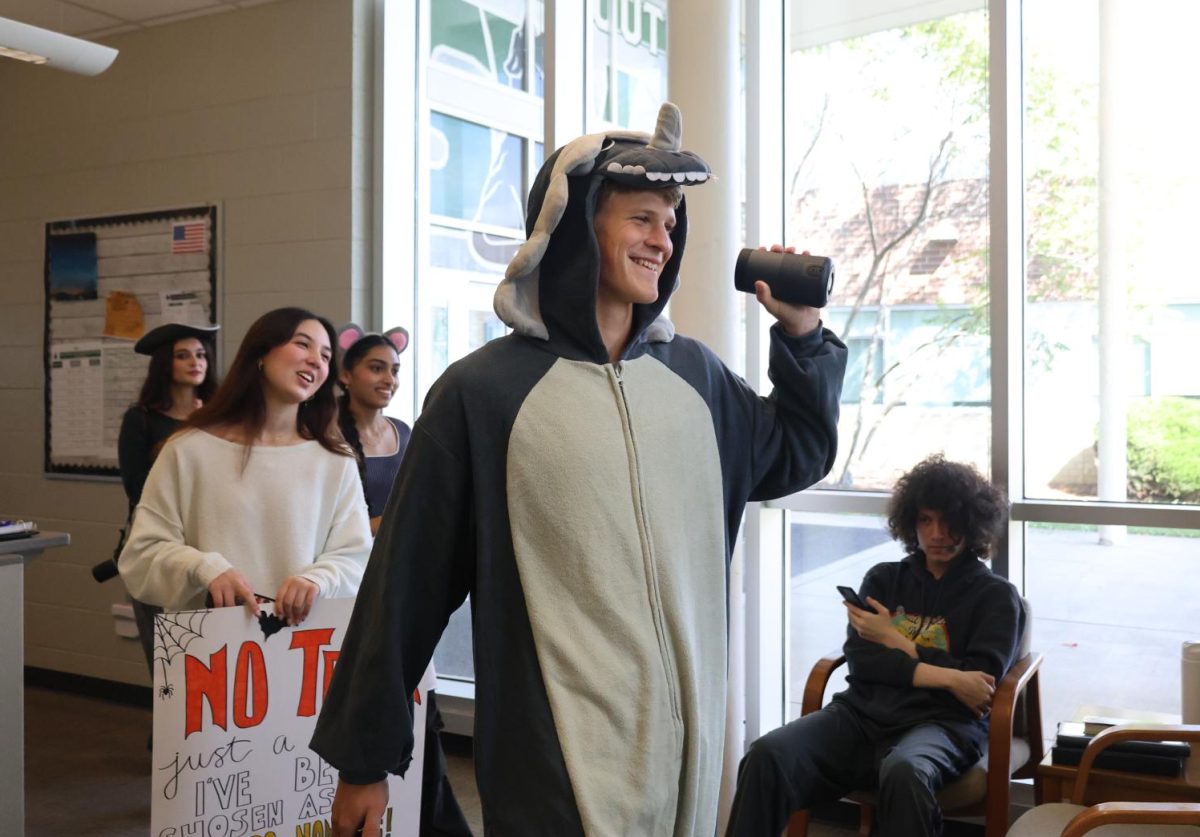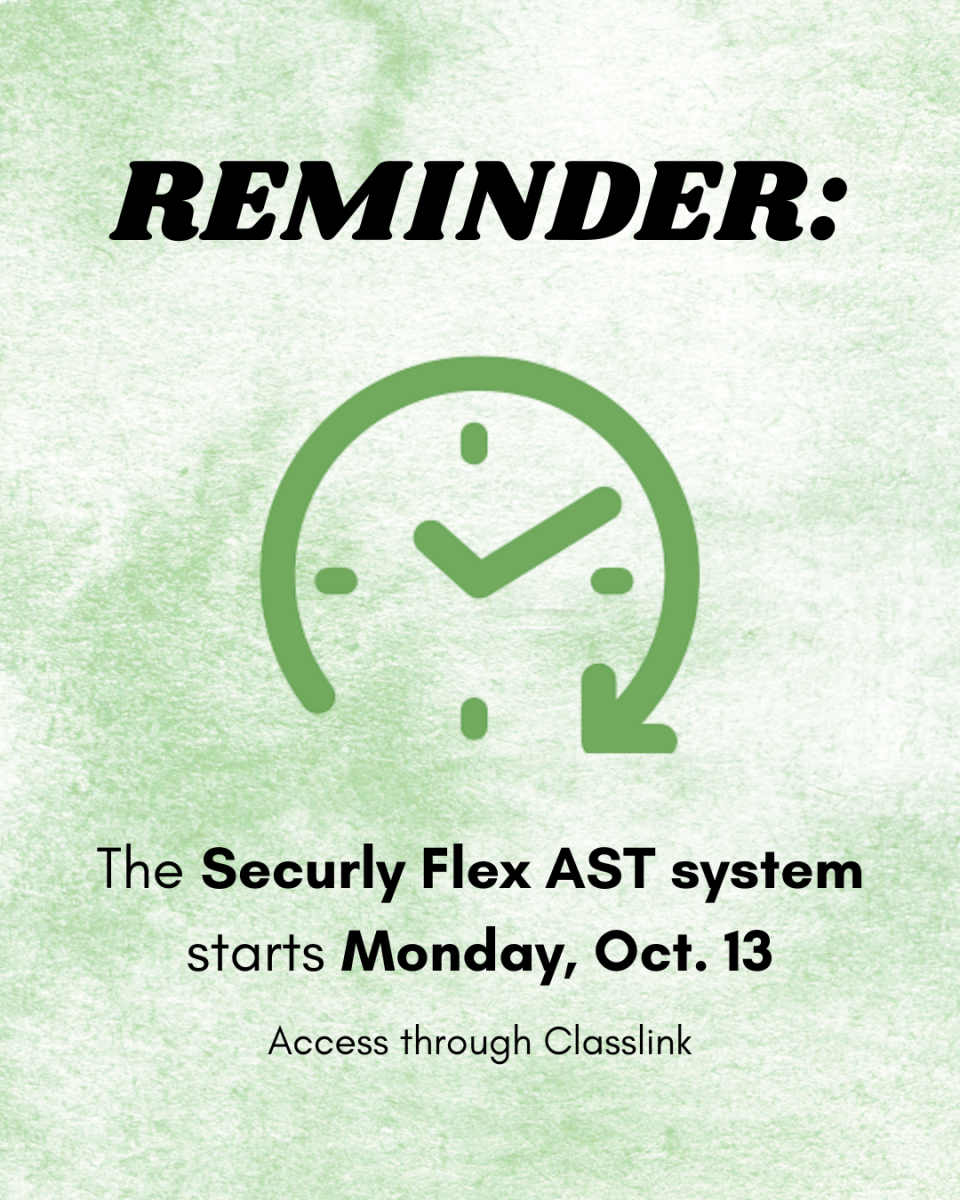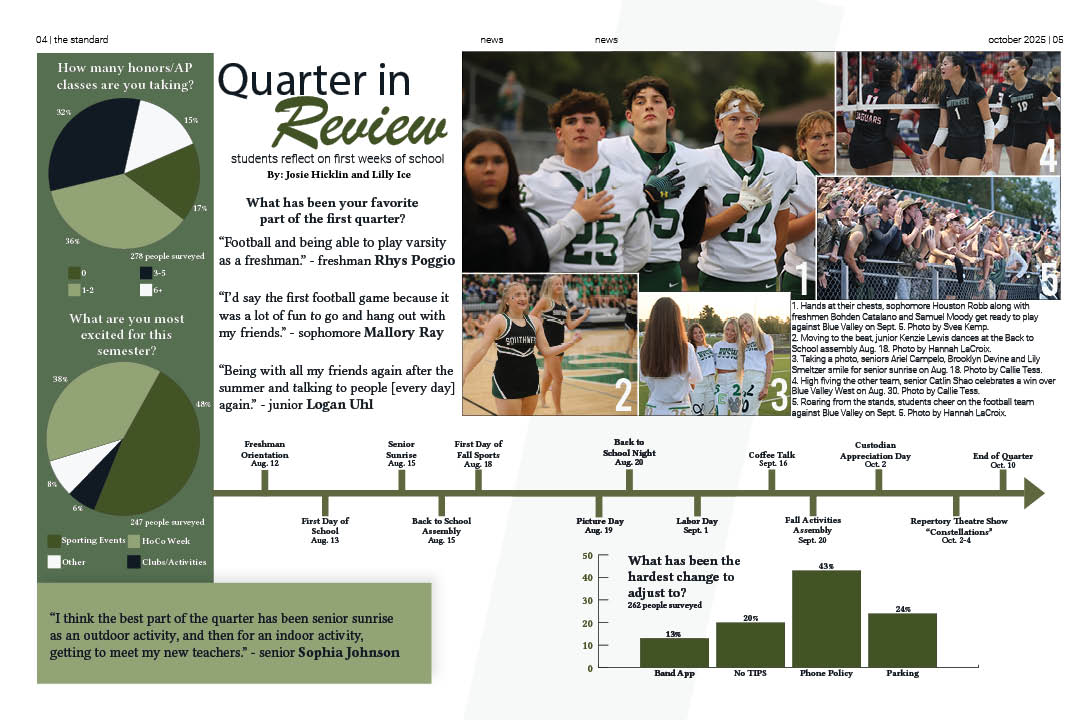This year, Blue Valley Southwest teachers had the option to give up their plan or supervision time. By giving up their plan time and teaching more hours, class sizes remained smaller than classes in other schools, which benefited students in this age of budget cuts.
“We really wanted to offer as many opportunities for classes as the other schools, to help transfer students,” Lisa Wilson, Associate Principal for Curriculum and Instruction, said.
Teachers had the choice to keep or sacrifice their plan or supervision hours.
“We can’t force them to give up that time,” Wilson said. “It’s the law that teachers get so much time off every day. But we didn’t have to ask many people — many teachers offered up their time.”
Teachers also had to make personal time sacrifices to make their schedule work.
“It certainly adds to a teacher’s load outside of school,” Wilson said. “But without exception, people have stepped up. The staff has been great about it.”
For World Languages teacher Carolyn Zeligman, the biggest sacrifice she’s had to make is the loss of her free time.
“I get here at 6:30 a.m. and I usually don’t get home until seven p.m.,” she said. “It’s a lot, because I’m also in charge of community service and KAY club. I didn’t think it through as much as I maybe should have.”
Communication Arts chair Tyson Ostroski says that he gets to school at 5:45 a.m.
“That’s when I do my planning for the day,” he said. “All of my grading is done at home.”
Transfers also affect teacher’s schedules because if the number of students requesting the same class goes up, a teacher is then needed to fill the spot. If there are enough demands for a single subject, a new teacher is hired. However, more often than not, a teacher already in the building volunteers.
“When we suddenly grew, the district responded with extra teachers for us,” Wilson said. “We added a few more full-time teachers — another Biology and another math. We also took some of people that were part-time teachers and bumped them up to full-time. Up through the first week of school, we were still changing things.”
Enrollment jumping so much was the reason teachers decided to make this change.
“When 150 students decided to show up, we needed an additional class in the CA department,” Ostroski said. “I didn’t have to do this — if I had said no, I wouldn’t have had to. But other teachers already had a lot on their plates.”
When students transfer to another school, both schools’ FTE is affected.
“When those things happen, the other building will have to absorb those students and adjust their FTE,” Wilson said. “So, if someone applies to transfer somewhere and wants to take a history class, but that schools’ FTE for history classes is already to the maximum, it causes problems. That goes for any movement throughout the year. Schools just have to absorb it.”
With a smaller school, and fewer teachers, initial enrollment accuracy becomes even more important.
“The enrollment numbers we get in January are especially important,” Wilson said. “The more accurate those are, the more accurate our FTE is. It’s frustrating when I have 300 schedule change requests because sometimes I have to say, ‘I’m sorry, that just won’t work’.”
The staff was receptive to the need of more sections of certain classes.
“It isn’t a negative thing,” Zeligman said. “I don’t mind teaching the extra classes, it just takes up a lot of time.”
Ostroski said that he misses the social contact provided by having a free hour.
“I feel like I’m in a classroom all day long,” he said. “And that stinks. You lose that time, when, during planning, you can go to the library or something. All day I’m just kind of doing my thing in 311. But the upside of this is that I get to see more kids.”
“We really wanted to offer as many opportunities for classes as the other schools, to help transfer students,” Lisa Wilson, Associate Principal for Curriculum and Instruction, said.
Teachers had the choice to keep or sacrifice their plan or supervision hours.
“We can’t force them to give up that time,” Wilson said. “It’s the law that teachers get so much time off every day. But we didn’t have to ask many people — many teachers offered up their time.”
Teachers also had to make personal time sacrifices to make their schedule work.
“It certainly adds to a teacher’s load outside of school,” Wilson said. “But without exception, people have stepped up. The staff has been great about it.”
For World Languages teacher Carolyn Zeligman, the biggest sacrifice she’s had to make is the loss of her free time.
“I get here at 6:30 a.m. and I usually don’t get home until seven p.m.,” she said. “It’s a lot, because I’m also in charge of community service and KAY club. I didn’t think it through as much as I maybe should have.”
Communication Arts chair Tyson Ostroski says that he gets to school at 5:45 a.m.
“That’s when I do my planning for the day,” he said. “All of my grading is done at home.”
Transfers also affect teacher’s schedules because if the number of students requesting the same class goes up, a teacher is then needed to fill the spot. If there are enough demands for a single subject, a new teacher is hired. However, more often than not, a teacher already in the building volunteers.
“When we suddenly grew, the district responded with extra teachers for us,” Wilson said. “We added a few more full-time teachers — another Biology and another math. We also took some of people that were part-time teachers and bumped them up to full-time. Up through the first week of school, we were still changing things.”
Enrollment jumping so much was the reason teachers decided to make this change.
“When 150 students decided to show up, we needed an additional class in the CA department,” Ostroski said. “I didn’t have to do this — if I had said no, I wouldn’t have had to. But other teachers already had a lot on their plates.”
When students transfer to another school, both schools’ FTE is affected.
“When those things happen, the other building will have to absorb those students and adjust their FTE,” Wilson said. “So, if someone applies to transfer somewhere and wants to take a history class, but that schools’ FTE for history classes is already to the maximum, it causes problems. That goes for any movement throughout the year. Schools just have to absorb it.”
With a smaller school, and fewer teachers, initial enrollment accuracy becomes even more important.
“The enrollment numbers we get in January are especially important,” Wilson said. “The more accurate those are, the more accurate our FTE is. It’s frustrating when I have 300 schedule change requests because sometimes I have to say, ‘I’m sorry, that just won’t work’.”
The staff was receptive to the need of more sections of certain classes.
“It isn’t a negative thing,” Zeligman said. “I don’t mind teaching the extra classes, it just takes up a lot of time.”
Ostroski said that he misses the social contact provided by having a free hour.
“I feel like I’m in a classroom all day long,” he said. “And that stinks. You lose that time, when, during planning, you can go to the library or something. All day I’m just kind of doing my thing in 311. But the upside of this is that I get to see more kids.”







